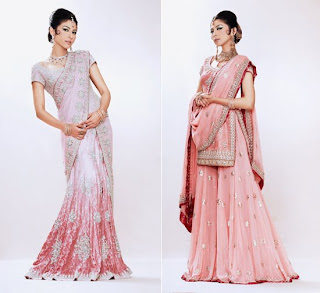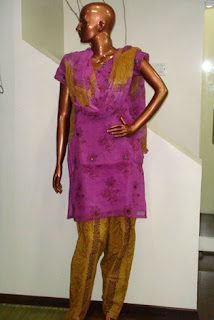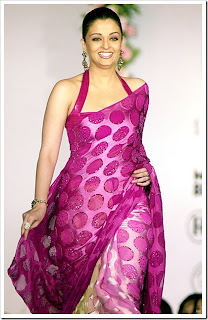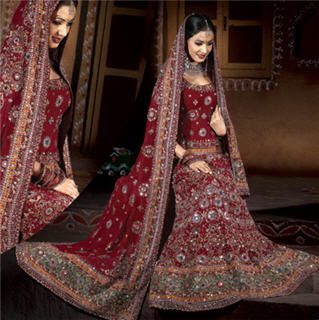Lakme India Fashion Week – A Review by Gaurav Doshi
India is becoming the latest fashion hub for the fashionistas.
Indian designers are no longer confined to the domestic fashion and apparel market, they are gaining recognition and fame from all over the world. The various government policies and a boom in fashion industry have made it possible. One of the major breakthrough provided to
Indian designers to showcase their talents are through the medium of fashion shows. Lakme India Fashion Show is the most popular fashion show celebration of India where the talents of already established and upcoming designers are showcased.
This event is a fashion celebration laced with lots of glamour and national as well as international media coverage. This time
lakme India fashion week was held at Mumbai from 31st Oct- 4th Nov. Many high profile designers as well as audience witnessed this fashion fiesta. Famous bollywood celebrities were part of it.
Eminent designers like Surily Goel, Narendra Kumar, Sabyasachi Mukherjee, Nalandda Bhandari, Nandita Mahtani, Anand Kabra, Abhishek Dutta , Wendrell Rodericks, Anupama Dayal, Vikram Phadnis, Chaitanya Rao, Sanchita, Savio Jon, Payal Singhal, Sanjay Malhotra, James Ferriera, Priyadarshini Rao, etc presented their spring/summer 2007 collection. Also South African designer duo Sun Goddess and Clive Rundle presented their collection.
Brief descriptions of some designer’s creative work are as follows :-
Nalandda BhandariNalandda Bhandari designs simple yet attractive and wearable collection under the brand name ‘Nasha’. She named her spring/summer 2007 collection ‘Free Spirit’. She covered all patterns and styles of contemporary women clothing, dress patterns like- tunics, kaftans, tube dress, skirts, shirts and burnt gold evening gown dominated her show. She played with glamour clad fabrics like chiffon, silk, georgette, voile, cotton and crepe. Her collection was largely ruled by animal prints and embroideries like African embroidery, sequin embroidery, etc. She also presented her men collection. She included her logo of rose embroidery in almost every outfit.
Narendra Kumar The very famous designer Narendra Kumar presented his spring/summer collection 2007 at Lakme Fashion Week. The collection was named as ‘Love Touches You’. He presented a perfect blend of traditional and contemporary designing paired beautifully with each other. The women’s line of western collection had smocked & pleated skirts, balloon skirt with shirt dress, half collars, bloomers, chiffon with appliqué sleeves, etc which were created with the designer’s unique touch and detailing. The preferred fabrics by the designer were cotton, georgette, net, silk, mull and linen. The collection was unique but wearable in terms of design and pattern.
The men collection was very stylish and appealing in nature. Men models walked the ramp with elaborate embroidered batik styled shirts paired with stylish trousers completed with patch pockets and shiny zippers. Fun element of, feminity to male garments was provided by showcasing sophisticated floral printed baggy tops paired with tight fitting pants and capris. The choice of colors was dull jade, beige, blue, brown, saffron and white. Complicated embroidery, smocking, appliqué work and shadow work were part and parcel of his creative designing. The fun element was when the famous model turned actor John Abraham walked the ramp with white linen suit. Thus he complied every bit of creativity and entertainment aspects to his collection which gained him standing ovation by the audience and showering of red carnations.
Surily GoelSurily Goel is young and talented designer who even designs for film personalities. Her latest creation on big screen was for actress Preity Zinta for the film ‘Jaan-e-Mann’. Her collection presented the carefree and sensual side of women’s clothing. This year’s collection was marked by knee-length skirts of georgette, crochets, chiffon, light silks and organdy, highlighting pleats and waist gathering with satin belts. Also single piece bubble outfits created in wide range of colors and fabrics. In this time’s collection she used more of small colored stones.
The presence of film personalities like Dino Morea, Sonali Bendre, Neelam Kothari, Fardeen Khan, Sameera Reddy and Tara Sharma in the audience during her collection put the star element into the show.
Chaitanya RaoChaitanya Rao’s collection was like early morning breeze with booming petals of budding roses. The delicate fabrics like georgette and chiffon provided that sexy feminine look to her collection. As her signature, she included moth in the form of embroidery or appliqué in all of her garments. The models took over the ramp with her mesmerizing feminine collection comprising of hem blouses with theme embroideries, pleated mini skirts with batik prints, moth appliqué blouses, long frayed double hem dresses, pale grey chiffon tunic, cream color chiffon bubble dress, dolman sleeved hipster blouses, the list goes on. To accessorize her collection she used thin and broad belts.
SanchitaSanchita’s collection presented in Lakme Fashion Week was bold yet wearable. She divided her collection into three segments- Punk chic, Copacabana and Swinging deco. The stunning designer pieces of bikinis and pareos, Hawaiian inspired kaftans, small balloon skirts, floaty dresses and minis provided the feeling of the beaches of Copacabana, St. Tropez and Riviera to the audience. Her collection was quite glamorous consisting of outfit like grey T-shirts with silver leggings, lycra T-shirts having sleeve ornamentations, strapless dresses accompanied with necklaces, earrings and brooches.
The men collection was marked by casual wear T-shirts, poplin trousers with detailed embroideries and white tuxedo jackets.
The garments were decorated with semi precious stones or with attractive patch works. Her line of collection was dominated by colors like white, apatite, agate, jade, opal and black onyx. The garments were accessorized with intrinsically crafted jewelry and bags.
Savio JonThis designer emphasized heavily on the comfort factor of the garments. Savio Jon is well known for his simple yet attractive clothing lines which are high on value and seductive quotient. Unlike other designers he preferred his garments to hang loose around the body instead of body hugging/tight fitting clothes. He used free flowing fabrics like fish net, mul, chiffon, georgette and crepe.
Pinafore silhouette, long lean maxis, oversized blouses, deep shoveled armholes, low back and front necklines, were some types of garments he presented. In evening wear he glamorized the tubular silhouettes with shimmers. The ranges of colors choosed by him for his collection were beige, grey, brown, black, pale yellow and white. Thus the colors were also sober and subtle.
Payal Singhal
Payal Singhal for the first time presented her collection in Lakme Fashion Week. Her designer collection for women were designed keeping in mind today’s working women’s needs and comfort level. Stylish yet affordable was the key element associated with her collection. She beautifully used cutwork, satin, georgette, jacquard, tulle, cotton, crepe, taffeta, brocade and seersucker in club and partywear for dresses and tunics. Her display of outfits on ramp descended gracefully from daywear to glamorous evening wear. She started her showcasing of designs in oyster white color then, tea rose, yellow, coffee, watermelon to grapefruit color. Display of tunics and blousons were coupled with melon, gold or silver tights. The signature outfit was the oyster white kaftan embellished with golden embroidery.
Sanjay MalhotraSanjay Malhotra named his spring/summer 2007 collection –‘Dejavu’. The key phrase which inspired him for this collection was –Life through my rose colored glasses. He instead of sticking only to free flowing usual feminine fabrics, even experimented with fabrics like fur, leather, voiles, denim, suede and laces which were highly appealing to today’s power packed independent women. The beautiful mix-n-match of these fabrics in sober as well as striking colors presented a collection that was bold enough yet stylish and wearable. Few of the many outfits displayed by him were- ivory colored mirror jacket with chiffon sleeves, colorful corset skirt accompanied with net petticoat, tunic with fur edge, etc. His collection was for the woman who likes to seek attention of the crowd and be different.
Clive Rundle and Sun GoddessClive Rundle and Sun Goddess were two international South African designers who presented their collection at Lakme Fashion Week. Fusion was the key style of their outfits. Extravagant layered dresses and skirts, jackets, evening wear, loosely fitted shirts and trousers, long coats and tops were part of their garment showcase. Their choices of colors were mainly creams, cherries, plums, peaches, sapphires, maroons and mauves. The free flowing pleated and layered outfits depicted the south African culture and fashion essence through them.
James FerrieraJames Ferriera made his debut at Lakme Fashion Week. He named his collection ‘Bombay Tokyo’. His collections were inspired by Maharashtra’s rich textile heritage.
The collections were divided into seven segments which were even named. The sari, an ode to devnagari, the hardy traditional towel, black magic, the sholapur story, warli and diwali were the seven names given to the segments.
Traditional warli paintings and paithani motifs were done on the clothes. Very uniquely he transformed the traditional forms of maharashtrian clothing into contemporary designs, like nine yard saris were intelligently converted into tunics. Marigold and leaf motifs were used on black shirts with cowl necks.
To describe in a nutshell his collection used ethnic fabrics and designs on garments with style and attitude. The outfit presented during finale had black georgette garments with glittering Paithani embroidery designs on them.
Conclusion This event is marked by presence of celebrities and traders all across the globe. Also it provides a platform for the budding designers to show their talent and establish themselves into the high profile fashion industry, for the already established designers to show their collection and maintain their popularity level. The above mentioned review is for few of the many prominent and talented designers. The nutshell description of the designers suggests that this celebration of fashion and style is a sure shot success for India’s designers and promote the export business too. The very presence of film stars on the ramp of their favorite designers and in the audience is the crowd puller factor of this celebration. Lakme Fashion week is extensively covered by media and promoted also.
Fibre2fashion.com- Leading B2B Portal of Fashion, Textile and Apparel Industry offers Free Fashion Articles, Free Fashion Trends Articles, Free Industry Reports, Free Articles, Free Fashion Designers Articles, Women’s Fashion Tips, Fashion Tips Free Fashion Case Studies and Fashion Market Country Reports – submit your reprinted articles, featured articles free and get advantage of largest community of textile apparel, fashion and retail industries.
To read more articles on Textile, Fashion, Apparel, Technology, Retail and General please visit http://www.fibre2fashion.com/industry-article If you wish to download/republish the above article to your website or newsletters then please include the "Article Source”. Also, you have to make it hyperlinked to our site.
























